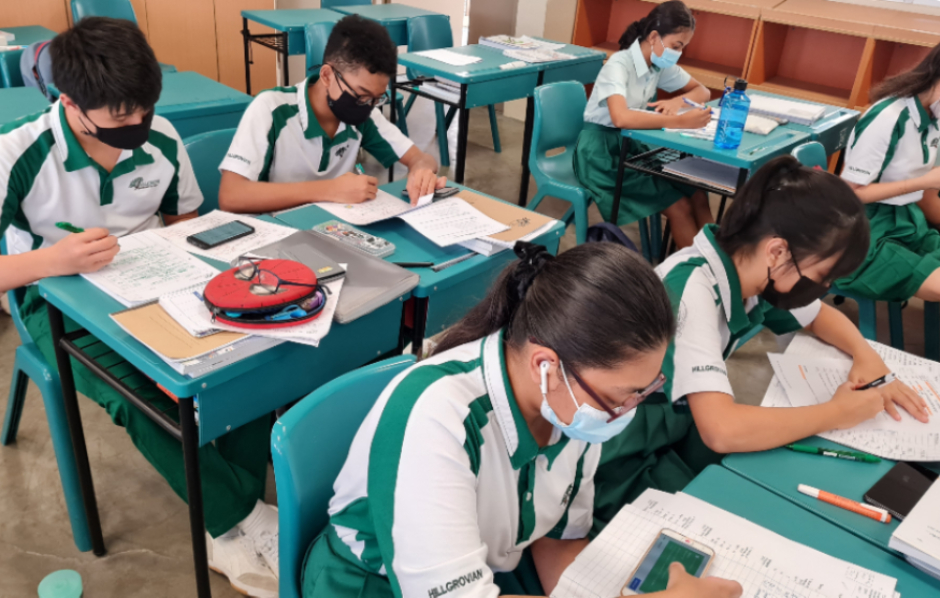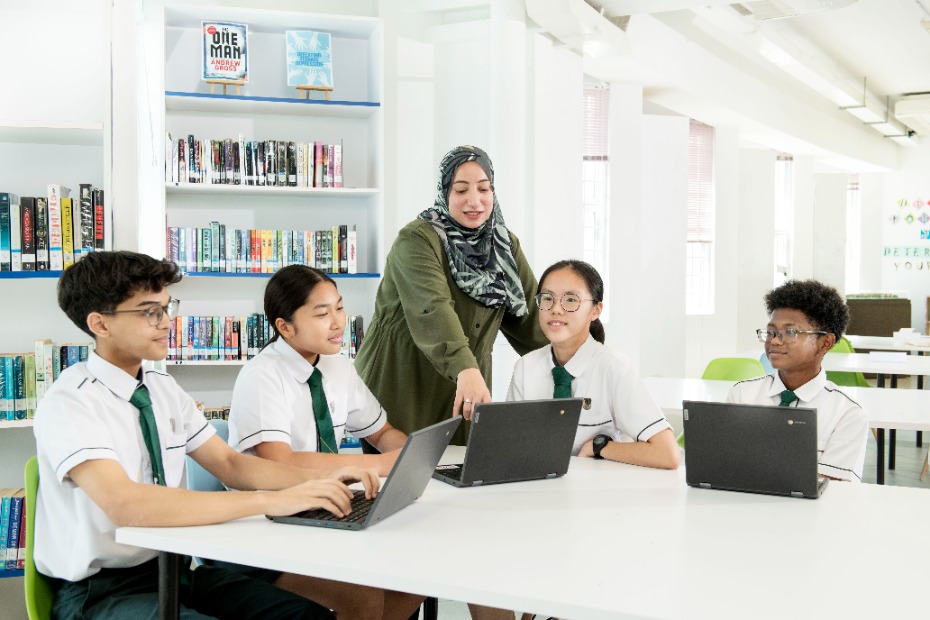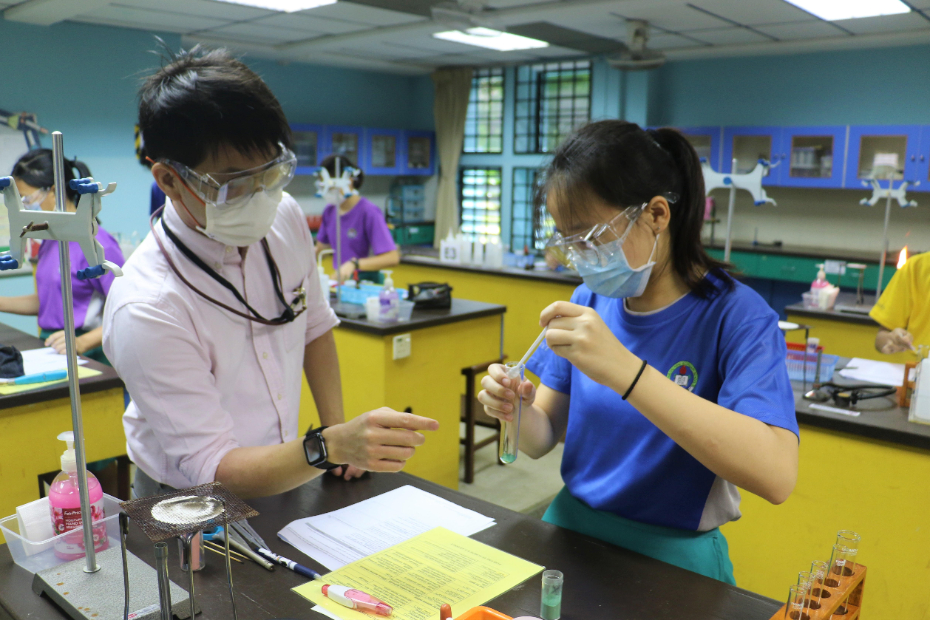Feeling up for a Math class challenge? Try this: There are 21 students in Mrs Peh’s Math class. 8 of them have completed all the exercises well, 10 of them have a couple of questions to correct, and 3 of them (unfortunately) have pages of corrections to go through. How many teachers are needed to ensure they all learn effectively during the lesson?
Okay, we kid… But jokes aside, that was an actual challenge that Mrs Peh Jing Er from Changkat Primary had to grapple with, as she looked over her Primary 4 students’ Math homework in Term 1.
Her students have very different learning styles and abilities. She knew that some of them needed a lot more help to understand the topic and re-attempt the questions. However, re-teaching the lesson and going through corrections may bore the other students who have already grasped the concepts.
That was when Jing Er thought of an approach she had read about on the Singapore Learning Designers Circle (Sg LDC) Facebook group.
Taking the first step
In this approach, also known as Personalised Learning, students get a learning plan that is customised to their pace of learning and what they already know. In such a classroom, students who are ahead can review the lesson or try more challenging tasks independently (or with the help of technology), while the teacher guides those who need more help.
Jing Er admitted she was initially apprehensive about trying this approach, “I loved the idea when I read about it on SgLDC, but I never had the courage to try it out. I’ve always been a systematic and organised teacher. The thought of allowing the students to do different things at the same time just seemed too chaotic to me!”
Still, Jing Er decided to give it a go. She printed a personalised task sheet for every student and spent the first few minutes of class explaining what they had to do. What happened next surprised her.

Folders with customised task sheets for each student (left) and students learning independently on their devices (right)
“Everyone, and I mean everyone, was on task.”
While Jing Er went over the concept again with a couple of students, the others were able to complete their tasks independently. Some watched a video pre-recorded by Jing Er on their tablets, which explained how to do certain corrections, while others challenged themselves with Math quizzes on their devices. At the end of two periods, almost all of the corrections were cleared, and everyone managed to accomplish something in the lesson.
“Although it took a while to plan and pack everything, I think I have an easier time in the classroom,” shared Jing Er. “I could focus on the students who really needed me!”
Inspiring others
Jing Er later shared about the outcome of her little experiment in SgLDC. Her post encouraged a few other teachers to try out this approach.
Ms Deanna Chua from Nan Chiau Primary School, who teaches Primary 3 Science to a mixed ability class, was one of them. She was looking for a solution that would allow her to spend more time coaching students who tended to progress slower, while ensuring other students remained gainfully occupied. She found her answer in Jing Er’s post.
“I was a little hesitant as I had tried something similar with a Primary 4 class the year before,” Deanna recalls, “but it was chaotic! Perhaps, I was too ambitious and included too many tasks. Jing Er’s story motivated me to try again.”
Instead of individual folders with customised task sheets, Deanna flashed the instructions on the screen, and explained the order in which the tasks should be attempted. Those who had corrections should complete them first, before doing up their Science files. Those who were done with both could test their knowledge of “Living and Non-Living Things” with a series of puzzle games she created using the online tool, Deck Toys.
The fastest students managed to complete all the tasks and the game, while most of the class eventually cleared at least one of the two stages in the game. This allowed Deanna to direct her attention on those who needed more help, and eventually helped them catch up enough to get started on the game too.

With this approach, students could be doing different things at the same time – but that’s okay. It means they get to progress when they are ready, at their own pace.
“It wasn’t all quiet, but the chatter was focused on the activity,” Deanna reflected. “I could focus on those who needed help with their corrections. The others were engaged on Deck Toys and even figured out functions I didn’t know about – like challenging each other in the game!”
Deanna also shared her experience in the SgLDC group.
“The fact that I was hesitant about trying out the lesson made me think that there may be teachers like me in the community. I hope to show that it’s not that difficult and encourage them to try it!”
It doesn’t stop here
SgLDC is open to all educators. Who would have thought Jing Er’s experience with P4 Math would be relevant to a Secondary 3 Principles of Accounts (POA) class too?
Mdm Grace Ang Joo Bee, Senior Teacher at Hillgrove Secondary School, has also read about personalised learning before. Jing Er’s sharing, and the affirmation from other teachers who found the approach effective, provided the push to try it out.
“The timing was just right,” she shared. “I was going to wrap up the unit on journal entries (recording business transactions using double-entry rules). From the work they submitted, it was clear that some students still needed more help, while others were ready to move on.”
Since her students were older, Grace decided to give them more autonomy over their learning. She came up with eight tasks, including corrections, reflection on their own learning gaps, practice questions and starting on a new topic at their own pace with videos on their mobile devices. Some of the tasks, like corrections, were compulsory. But students could choose whether or not they wanted to practise questions or prepare their own notes for the chapter, depending on their confidence level.

“Eight tasks sounds like it’s a lot, but I know some of the students may take under 10 minutes for the corrections and reflections,” Grace explains. “I also expected some of them to skip the optional practice questions, so I wanted to include enough tasks to ensure that even the students with the highest readiness level will be engaged throughout the lesson.”
She also assured the class that they could access the videos and self-paced lessons over the weekend if they were unable to complete them in class.
During the lesson, Grace and an Allied Educator went through the corrections in detail with a small group of students who had misconceptions about the topic. The rest, whose mistakes were minor, or based on carelessness, could check their work against the model answer uploaded on the class Padlet before progressing on to the other tasks. This way they did not need to rush to copy down the solution, and take the time to understand what they did wrong.
Something that surprised Grace about the lesson was that most of the students, even those she considered proficient in the topic, attempted the optional tasks as well.
“Given sufficient time, I believe students are motivated to achieve mastery,” Grace surmises.
The end-of-class survey confirmed that students found the lesson to be effective, and quite a few commented that they liked that “it was not rushed” and that they “felt productive today”. One even wrote that “I don’t have to panic when the class progresses faster than me!”
Grace shared her experience on SgLDC the week after. Like Deanna, she hoped that her story would reassure others who might be hesitant about trying this approach.
“Since mine is a very niche subject, I wanted to encourage the POA teachers out there to innovate in their classroom practices. Although sharing in this community usually relates to core subjects like EL, MT, Maths and Science, it can be relevant to POA too.”






